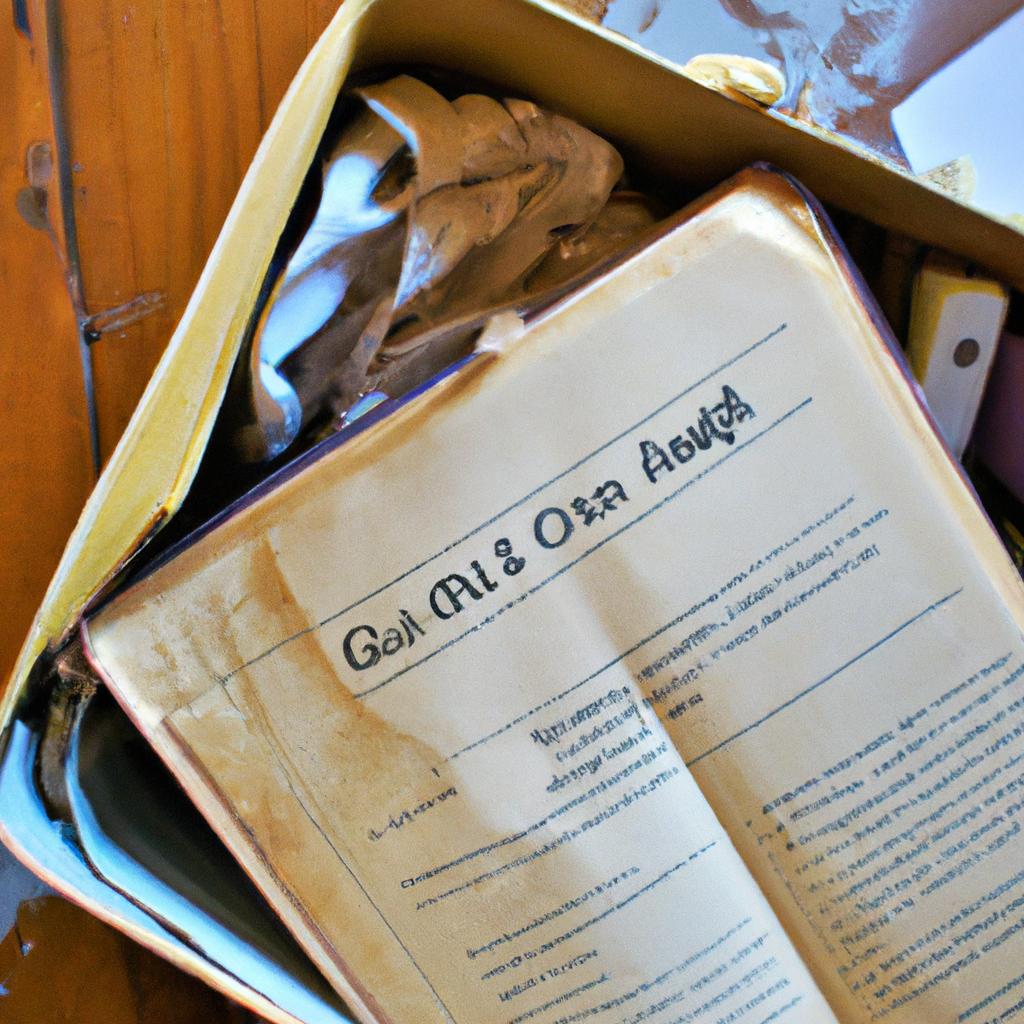Introduction
Organizing your home and decluttering can be overwhelming – where do you start? However, putting in this effort can bring peace and simplicity to your life. By investing a little of your time in organizing and decluttering, you can transform any room into a space that looks inviting and works better for your needs.
This guide is designed to equip you with the essential knowledge and techniques for creating an organized home environment. We will walk you through each stage, from identifying problem areas to maintaining order in the future. With our helpful tips, you will soon be enjoying all the benefits of a clutter-free home.
Let’s get started!
Identifying Problem Areas
It’s important to take stock of all the areas in your home that need decluttering and organizing. Doing this will help you determine which areas need the most attention and where you can begin decluttering and organizing.
It is helpful to take a researched-based approach towards identifying problem areas. Start by walking through each room of the house, making note of any items that appear to be out of place or redundant. Create a list of all these items and set about sorting them into categories such as those that should be discarded, donated, re-purposed or kept.
Inspect storage spaces such as closets, cupboards and shelves for items that may have been missed. This is a great time to sort through items you may have forgotten about and determine which are still usable, and which can be let go.
Take into account whether there is enough space to store items properly or if additional storage solutions are needed. Do a survey of the area, noting which items get used the most and least. Knowing what items are used often will help inform your decision of where to allocate space in each room.
Setting Goals
Organizing and decluttering your home is a big job. To make the process easier, it’s important to set goals and objectives for yourself so that you can focus on what needs to be accomplished. Having clear goals can help motivate you throughout the process and ensure that you don’t get overwhelmed.
Begin by writing down exactly what areas or items in your home you’d like to organize. Think about what kind of outcome you would like to achieve for each room. Maybe you want to make space for more items or maybe you simply want to give the room a more uniform appearance. Consider how much time and energy you are able to dedicate to this task and create an achievable timeline for yourself.
Once you have identified your goals, break them down into smaller steps. These should be easily achievable and should not be too challenging. For example, if your goal is to organize your kitchen, you can start by tackling the pantry. Aim to keep each task manageable so that you can stay focused and motivated throughout the entire process.
Creating goals is an essential part of organizing and decluttering your home. Once you have identified the tasks that need to be done, the rest of the process will become much easier. By setting specific goals, you will be able to stay on track and make sure that everything gets accomplished according to plan.
Sorting and Organizing Your Home
Sorting and organizing your home is one of the key components in decluttering. When you make a plan for where items are stored, and ensure that they are in their designated spaces, it becomes easier to keep things tidy and organized. Utilizing boxes and bags is the best way to get started on the process of organizing and decluttering your home.
Begin by deciding what items should go in each room. Consider what usage each item has and how often it is used. For instance, if you have a large collection of books, consider putting them in a place where they can be easily accessed and don’t take up too much space. Baskets or bins may work well for storing items like books, and you can even label them if you’d like.
After determining which items should go in each room, separate them into categories. This is especially helpful when sorting through clothing and electronic items. By categorizing items, it becomes easier to find what you need when you need it, instead of having to dig through a pile of stuff.
When gathering boxes and bags, utilize different sizes so that items can fit snugly. This will ensure that things stay organized and can easily be put away when not in use. It’s also a great way to store smaller items that would normally be difficult to keep track of.
Finally, organize bins and baskets in a way that makes sense. After all, it’s important that you have access to what you need without having to go through an abundance of clutter. The goal is a cleaner space with fewer items to clutter the area.
Taking Action to Organize and Declutter
If you’re feeling overwhelmed by the clutter and mess in your home, don’t worry – help is here! Taking action is the key to achieving your goals, no matter how big or small. Here are some tips to get you started:
- Start with the room that needs the most attention. Tackling the hardest room first will make the rest of the decluttering process seem much more manageable.
- Set aside a specific amount of time to dedicate to tidying each day. Even if it’s just 20 minutes, doing something is better than nothing.
- Try breaking up the task into smaller, manageable chunks. For example, focus on one drawer or cupboard per day instead of the entire room at once.
- Think about your end goal – this can be useful for staying motivated and focused.
- Make it fun! Put on some music, grab a friend or family member to join in and offer rewards to yourself for completing each step.
By following these simple steps, you’ll be well on your way to organizing and decluttering your home. Taking action is the most important part of the journey – you never know what amazing things you can achieve until you try!
Preventing Clutter
Decluttering your home can be a tedious task, so it’s important to establish ways to keep clutter from creeping back in. Here are some strategies to help keep your home clutter-free in the long term:
- Set strict rules for what comes into your home. Before you bring a new item into your house, consider whether it’s essential and whether it will be used or enjoyed. If not, don’t bring it in.
- Discard items regularly. Don’t let items pile up – take the time to go through all the rooms of your house and donate or throw away anything you do not need.
- Make sure all items have a spot. Create designated areas in each room for items so you know where they belong.
- Be mindful of paper mail. Going digital with bills and other items is the best way to keep paper waste from piling up.
- Try to buy items with multiple uses. Multi-functional furniture can be a great way to save space and keep clutter at bay.
By utilizing these strategies and making these practices part of your daily life, you’ll soon find that your home remains in a decluttered and organized state!
Hiring Professionals (when needed)
Having the help of a professional when organizing and decluttering your home can be an invaluable resource. Professional organizers are trained to help you maximize efficiency, determine what needs to be kept and discarded, and create systems that will work best for you individually. It can also save you time in the long run and stop you from feeling overwhelmed.
However, it’s important to consider the costs associated with agencies or individuals before bringing them in. If you are on a budget, there are ways to limit costs, such as doing most of the work yourself and then hiring a professional for just a few hours to give advice or help with certain tasks. Since each situation is unique, it may be a good idea to consult with multiple professionals to get different perspectives before making your decision.
Whatever you choose, before bringing in help, make sure you have a clear understanding of the scope of work and fees so that there won’t be any surprises down the road. Spending a little more money upfront to get a professional might be worth it in the long run.
Making Space Work for You
When faced with limited space, it can be difficult to find innovative solutions and make the most of what you have. However, utilizing a few clever ideas can help maximize your living space and utilize every corner of your home. Here are some ways to make space work for you:
- Make use of vertical space – consider buying wall shelves and storage systems to help maximize your space.
- Utilize multipurpose furniture – look for furniture items that can serve multiple purposes, such as a coffee table with built-in storage.
- Implement under-the-bed storage – many stores sell storage solutions designed specifically for use under beds.
- Invest in collapsible pieces – such as foldable tables, chairs, and other items that can be easily stored away in small spaces.
- Group like items together – organize items by category or use and group them together in order to keep clutter from taking over.
- Choose furniture that fits your space – measure the dimensions of your living area and look for furniture that fits perfectly. This will prevent overcrowding in small areas.
By making use of these and other storage and organization solutions, you can turn any small space into an efficient area that works for you. So, don’t be discouraged by limited space – make it work for you!
Determining What To Keep/Discard
Organizing and decluttering your home can be made much easier if you know what items to keep and what to discard. Knowing what is truly needed and what could be let go is a key part of the process. Identifying what can be discarded will help you to create more space in your house and make it look cleaner, more inviting, and easier to manage.
To determine what items in your home can be safely discarded, begin by considering how you use an item and how often. Have you ever used the item in the past year or two? If not, it may be a good idea to get rid of it. Don’t forget to think practically as well. If you have an item that is in good shape but can easily be replaced with something more inexpensive, it might be worth replacing instead of keeping.
Once you have identified a few items that may be candidates for discarding, ask yourself further questions. Can you donate this item to a local charity? Is there someone else who may find a use for it? Before getting rid of an item, make sure that it would be useful to someone else too. If not, consider recycling it where possible.
It can also be a good idea to have a ‘maybe’ pile. This pile should contain items that you are not sure about just yet. You can revisit this pile later when you are feeling more confident. By taking time to really think and assess, you can be sure to make the right decisions.
Repurposing Items
Are you wondering what to do with belongings that no longer serve a purpose in your home? Whether it’s an old dresser or a collection of mismatched mugs, there are many creative ways to repurpose items in your home. Turning something that was once considered clutter into something eye-catching and functional can be fun and rewarding!
One way to repurpose items is to think outside the box. An old door can become a unique headboard for a bed. A small end table can be used as a nightstand. A small dresser can be transformed into a bathroom vanity. Thinking outside the box and employing a little creativity can Save Money help you make the most of what you already have.
Upcycling is another great way to repurpose items. Upcycling is when you take an item and give it a makeover to make it look like new again. For instance, you can take an old dresser and give it a fresh coat of paint. This simple change can make a world of difference and instantly update the look of any room. It also requires minimal effort and cost!
For large items that no longer serve a purpose, consider donating them to a local thrift store or charity. This will not only free up valuable space in your home but will also allow someone else to put the item to good use.
Repurposing items in your home is a great way to make the most of what you already have. With a little creativity and some elbow grease, you can turn something that was once considered clutter into something eye-catching and functional!
Maintenance Tips
Keeping your home organized and decluttered doesn’t have to be an overwhelming task. With a little bit of time set aside each week, it’s easy to safeguard the condition of your home and preserve its tidiness. Keeping on top of maintenance tasks can also help to avoid clutter from piling up. Here are some tips that you can use to maintain organization in your house:
- Set aside a specific amount of time each week or month to tackle any areas that may have become cluttered or messy.
- Take five minutes each day to put back items where they belong.
- Make sure to clean up after yourself as soon as you’ve finished using something.
- Create a donation box or bag and add to it any items that you no longer need, so that they can be given away.
- Check for expiry dates on food and other items and discard anything that has gone past its expiry date.
- Take out the trash regularly so that it doesn’t overflow and become a mess.
- Be mindful of how much you bring into the home, and try not to add items unnecessarily.
These simple steps can help keep the cycle of clutter and mess from occurring in your home. Taking the time to invest in regular maintenance will give you a sense of satisfaction and help to free up extra space for activities that you enjoy.
Conclusion
When it comes to organizing and decluttering your home, it’s important to have an understanding of the basics before diving in. This guide has outlined the main steps for achieving success with your home organization project, including identifying problem areas, setting goals, sorting and organizing, taking action, preventing clutter, hiring professionals (when needed), utilizing space, determining what to keep/discard, repurposing items, and maintaining orderly conditions. Utilizing these steps can help you create a relaxed and inviting atmosphere in your home, as well as clear up mental and physical space for yourself. Organizing and decluttering is truly an investment – one that pays off in many different ways.
comments: 0



